Ankle Injuries
The ankle is the most commonly injured joint in sports. Ankle sprains represent about 85% of all ankle injuries in North America. While an inversion ankle injury often involves injury to the lateral collateral ankle ligaments, other structures in this area may also be injured. These associated injuries may not be evident until weeks or months after the initial event, and may not present themselves until the patient attempts to return to full activity but is unable to because of persistent pain.
Typical associated injuries include chronic lateral ankle instability, peroneal tendon damage, nerve injury, syndesmotic sprain or tear, and intraarticular cartilage damage. Although the injury may initially seem minor, a thorough evaluation and aggressive, conservative therapy is important in improving the outcome.

Symptoms
- Patients often complain that the affected ankle feels "unstable" or "gives out" frequently
- Patients typically feel unsteady when walking on uneven ground or sloped surfaces
- Repeated inversion injuries will occur with the slightest provocation
- Patients commonly report twisting or spraining ankles every few months with varying levels of severity
- Persistent swelling to the anterolateral aspect of the ankle
- Bracing or taping may not provide adequate stability
Treatment
Initial treatment involves managing symptoms and biomechanical control. Non-steroidal anti-inflammatories or steroid injections, if used alone, usually do not provide long term relief.
- Changes in shoe gear
-
Functional orthotics are a vital part of treatment, especially when biomechanical abnormalities are present. The need for stability is paramount
- Taping and bracing, particularly during athletic activity
- Physical therapy such as laser and massage
If conservative treatment fails to provide relief or the ankle is too unstable to be controlled with bracing and orthotics, surgical treatment may be warranted. Surgical correction is based upon the presenting condition and varies from simple repair of ruptured ligaments to complex reconstruction of ligaments with tendon grafts and osteochondral repair of the damaged articular surface. X-rays, MRI,or CT scan may be needed for a complete diagnosis.
As a general rule, Ankle Injuries procedures are performed on an out-patient basis in an Alberta Health Services (AHS) approved Surgical Center or in a Hospital. Surgical procedural costs are covered by AHS or the patient may opt for private surgery to avoid a waiting time. A visit to Feldman & Leavitt Foot And Ankle Specialists will CLEARLY define all available patient options.







